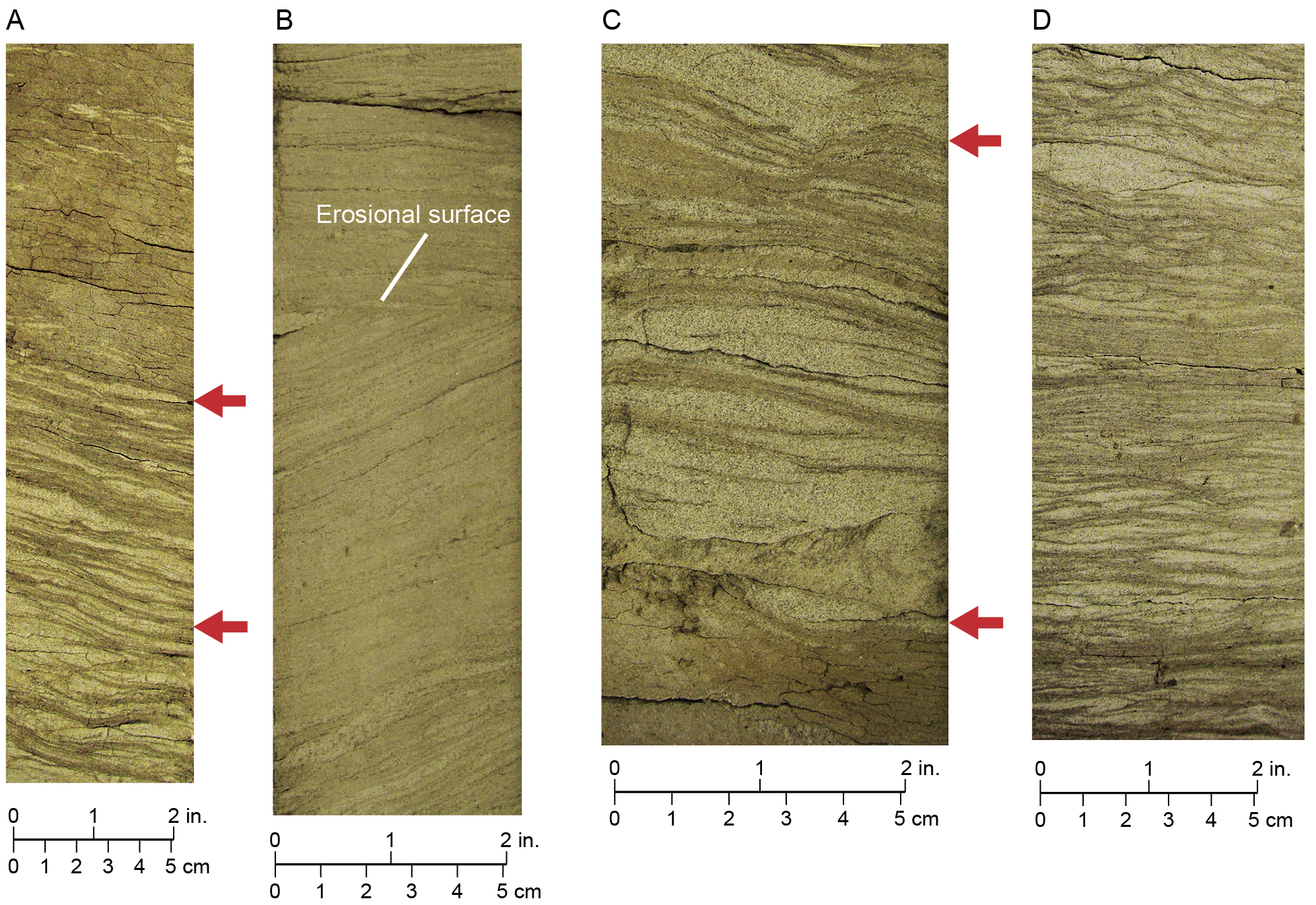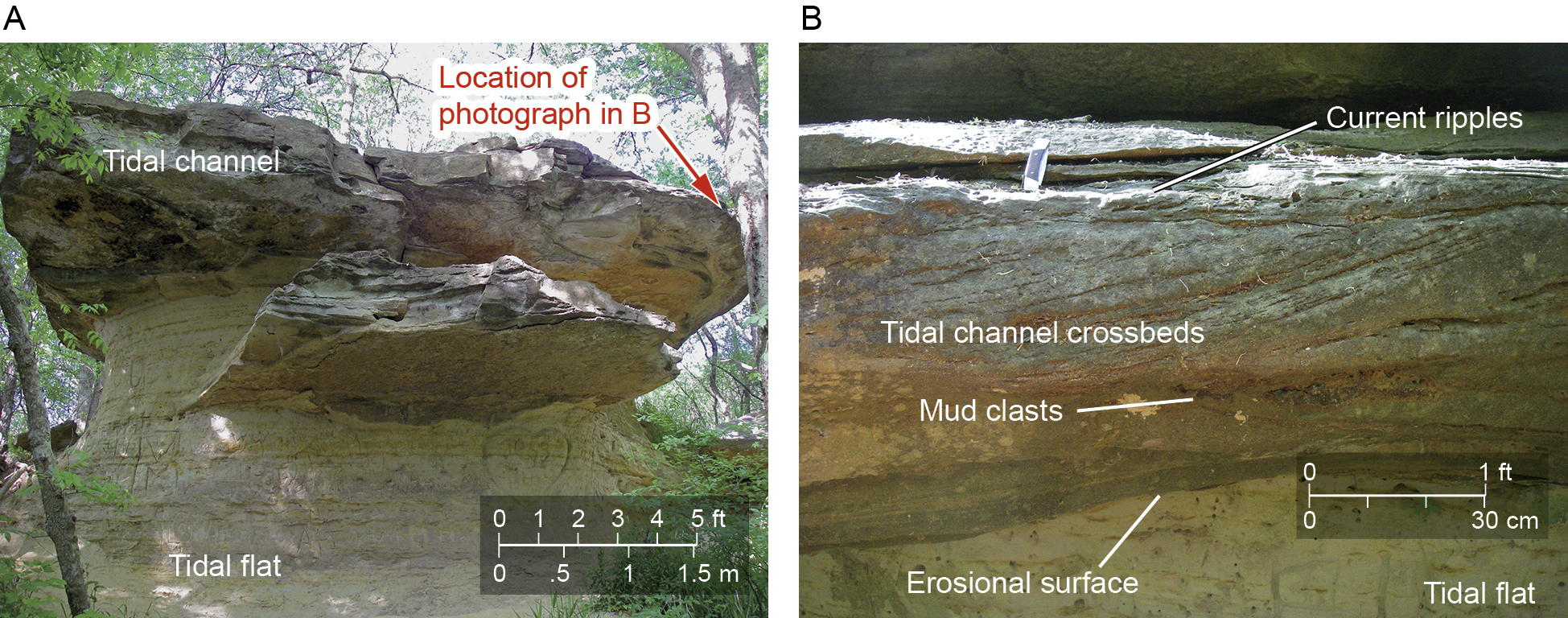Wilcox and Carrizo Regional Synthesis in the Southeast Texas Gulf Coast
The objective of this regional study of the Wilcox Group and Carrizo Formation is to demonstrate that this stratigraphic succession in southeast Texas contains a greater variability in depositional systems, facies, and reservoir sandstone-body geometry than previously documented. Previous studies interpreted fluvial-dominated, wave-modified deltaic systems from thick (>600-ft [>183-m]), undivided intervals that encompass multiple depositional episodes. In contrast, this study, which integrates wireline-log, core, and outcrop data in a 13,770-mi²-area (~35,660 km²) updip and along the Wilcox shelf margin in southeast Texas, resolves and delineates a variety of net-sandstone geometries in tidally modified delta, wave-dominated shoreline, and inner-shelf systems.
Analysis of more than 2,000 ft (>610 m) of slabbed core in Leon County and outcrops near Bastrop, Texas, provides evidence for tidal processes throughout much of the Wilcox-to-Carrizo stratigraphic succession. Sandy depositional axes in many Wilcox sequences are narrow (<3 mi [<4.8 km]) and exhibit complex, anastomosing geometries consistent with deposits of tidally modified systems. Tidal signatures in the Wilcox Group, Sabinetown and Carrizo Formations occur at a variety of scales—microscale, mesoscale, and macroscale. Microscale tidal signatures in Wilcox cores and outcrops include rhythmically bedded, double-mud-draped ripple stratification and flaser-to-lenticular bedding, and systematically upward-thinning and upward-thickening sets of mud-draped bedforms and laminae. These features are common in Wilcox, Sabinetown, and Carrizo deposits interpreted as tidal-flat, crevasse-splay, marsh/swamp, interdistributary-bay, tidal-inlet, tidal-bar, and distributary-channel paleoenvironments.
Because of variability in depositional systems and sandstone-body geometries in the Wilcox-to-Carrizo stratigraphic succession, both the vertical and lateral complexities of reservoir systems are greater than previously inferred, implying a greater potential for reservoir heterogeneity and compartmentalization. This complexity should be considered in future reservoir development strategies in the Wilcox-to-Carrizo stratigraphic succession.

Tidal deposits in the Calvert Bluff 2 sequence. A) Lenticular, mud-draped beds of very fine grained sandstone at 1,337.4 ft (407.7 m). Thickness of individual sandstone beds decreases upward, coupled with upward-thickening mud drapes within a 5-inch (12.7-cm) interval between arrows, suggesting this interval may be part of a tidal cycle recording upward-diminishing tidal energy. B) Very fine grained sandstone with erosional surface above steeply dipping beds at 1,329.0 ft (405.2 m). C) Mud-draped ripples composed of very fine grained sandstone at 1,320.0 ft (402.4 m). Many ripples are double-mud-draped. Scale of bedforms systematically decreases upward between arrows. Vertical features on left side of photograph are the result of core damage. D) Lenticular, mud-draped beds of very fine grained sandstone at 1,316.1 ft (401.3 m).

Upper Calvert Bluff Formation at Pancake Rocks along the Colorado River, southeast of Bastrop, Texas. A) Tidal flat and tidal channel deposits. B) Crossbedded tidal-channel facies, with location of photograph indicated in part A.
Research Program: STARR-30
Project dates: March 2019–January 2022
Project PI: William Ambrose
Other key personnel: Peter Flaig, Iulia Olariu, and Jinyu Zhang
Principal information contact:
William Ambrose
Email: william.ambrose@beg.utexas.edu
Telephone: (512) 471-0258
Fax: (512) 471-0140
Funding source: State of Texas
Other key partners/collaborators: Chris Denison (Astra Stratigraphics), Thomas Demchuk (RPS Group), and Jennifer O’Keefe (Morehead State University, Kentucky)
Geographic area of study: Southeast Texas Gulf Coast
General disciplines: Sequence stratigraphy, regional depositional systems and facies mapping/interpretation, play framework analysis
Keywords: Wilcox Group, Sabinetown Formation, Carrizo Formation, tidal systems, Gulf Coast Tertiary